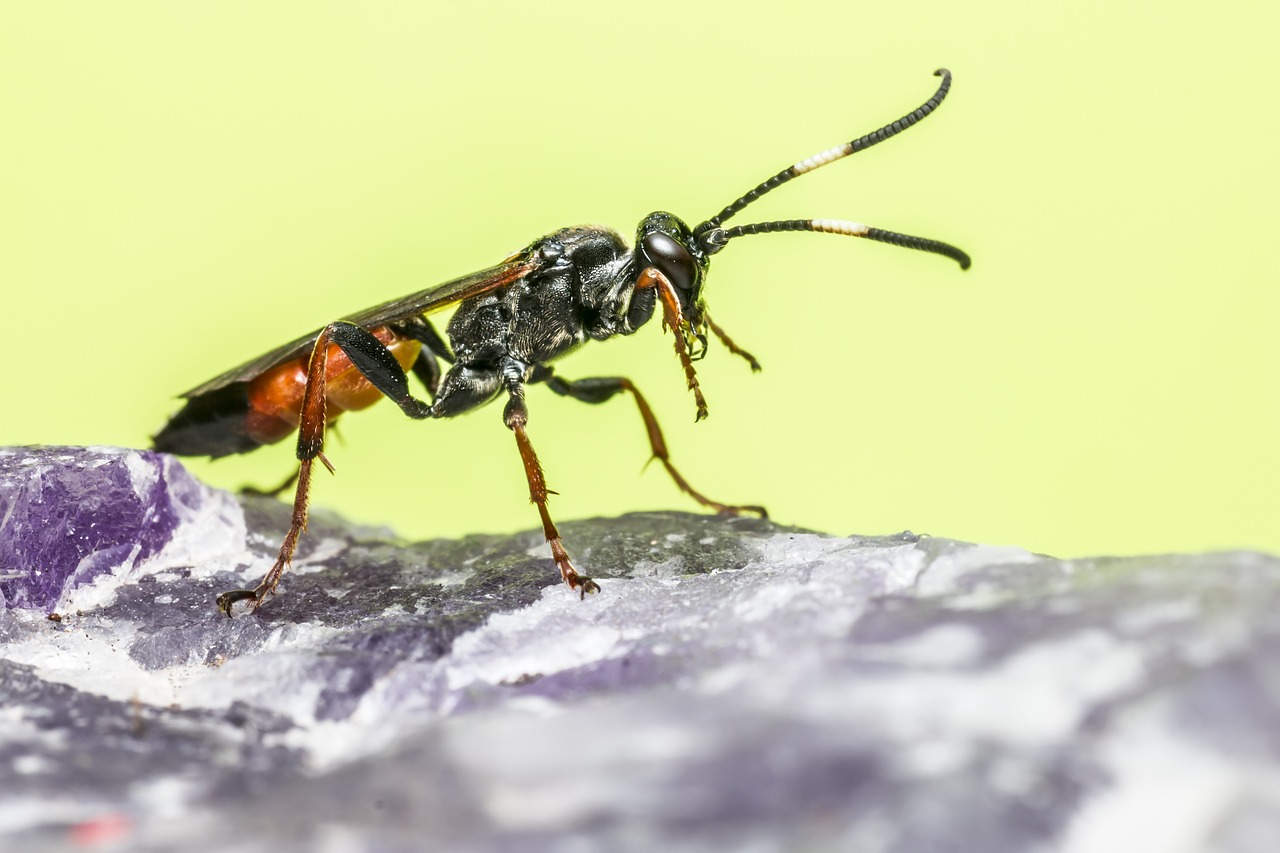The Common Hover Fly (Diplazon laetatorius) is a member of the family Syrphidae, also known as hoverflies or flower flies. It is notable for its role in pollination and its distinctive hovering flight behavior.
Physical Description
- Size: Diplazon laetatorius is a relatively small hoverfly, measuring approximately 6 to 9 mm (0.24 to 0.35 inches) in length.
- Coloration: The adult hoverfly is characterized by its striking black and yellow or black and orange striped abdomen, which resembles the warning coloration of bees. This mimicry helps deter predators by creating a resemblance to more dangerous insects.
- Wings: The wings are transparent with a slightly yellowish or brownish tint and feature a characteristic pattern of dark veins. They are highly functional for the hoverfly’s impressive hovering and agile flying abilities.
- Head: The head is relatively large compared to the body, with large, multifaceted eyes that allow for excellent vision. The antennae are short and bristle-like.
Distribution and Habitat
- Range: The Common Hover Fly is found across Europe and parts of Asia. It is a versatile species that can adapt to various environments.
- Habitat Preferences: It is commonly found in gardens, meadows, parks, and other areas with abundant flowering plants. Hoverflies are particularly attracted to environments rich in nectar sources.
Behavior and Diet
- Feeding: The adults primarily feed on nectar and pollen from a variety of flowering plants. They play an essential role in pollination, transferring pollen between flowers as they forage.
- Hovering Flight: One of the most distinctive behaviors of hoverflies is their ability to hover in mid-air. This hovering capability allows them to feed from flowers without landing, making them highly efficient pollinators.
Reproduction and Lifecycle
- Eggs: The female lays eggs in or near decaying organic matter or compost. The larvae (maggots) feed on the decomposing material, which provides the nutrients necessary for their development.
- Larvae: The larvae are typically white or cream-colored and are legless. They are scavengers that help decompose organic material, which is beneficial for nutrient recycling in the ecosystem.
- Pupation: After completing the larval stage, the larvae pupate in the soil or within the compost. The pupal stage lasts for a few weeks before the adult hoverflies emerge.
- Adults: The adults live for several weeks to a few months, depending on environmental conditions and availability of food sources.
Ecological Role
- Pollination: Diplazon laetatorius, like other hoverflies, plays a crucial role in pollination. As they visit flowers to feed on nectar and pollen, they help fertilize plants, which supports plant reproduction and contributes to ecosystem health.
- Decomposition: The larvae of the Common Hover Fly contribute to the decomposition of organic matter, aiding in nutrient cycling and the health of soil ecosystems.
Conservation Status
- Status: The Common Hover Fly is not currently listed as threatened or endangered. It is a widespread and adaptable species, with stable populations across its range. However, maintaining healthy habitats with abundant flowering plants and organic material is important for supporting hoverfly populations.
Summary
The Common Hover Fly (Diplazon laetatorius) is a valuable insect with significant ecological roles in pollination and decomposition. Its distinctive appearance, hovering flight capabilities, and beneficial behaviors make it an important species in both natural and managed environments. Understanding and conserving its habitat helps support its role in maintaining ecosystem health and biodiversity.
Visited 855 times, 4 visit(s) today
Views: 1323
Subscribe to the newsletter:
